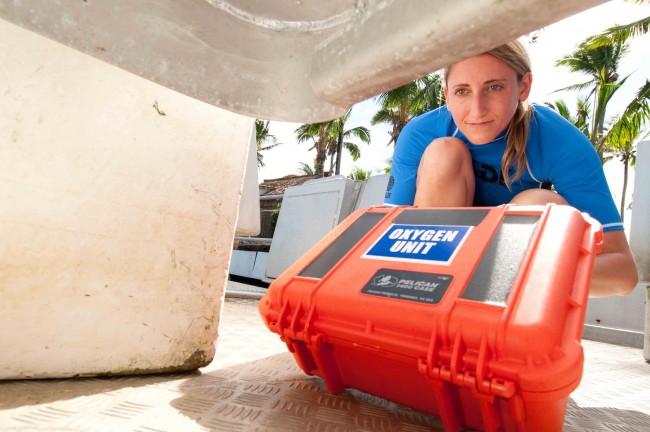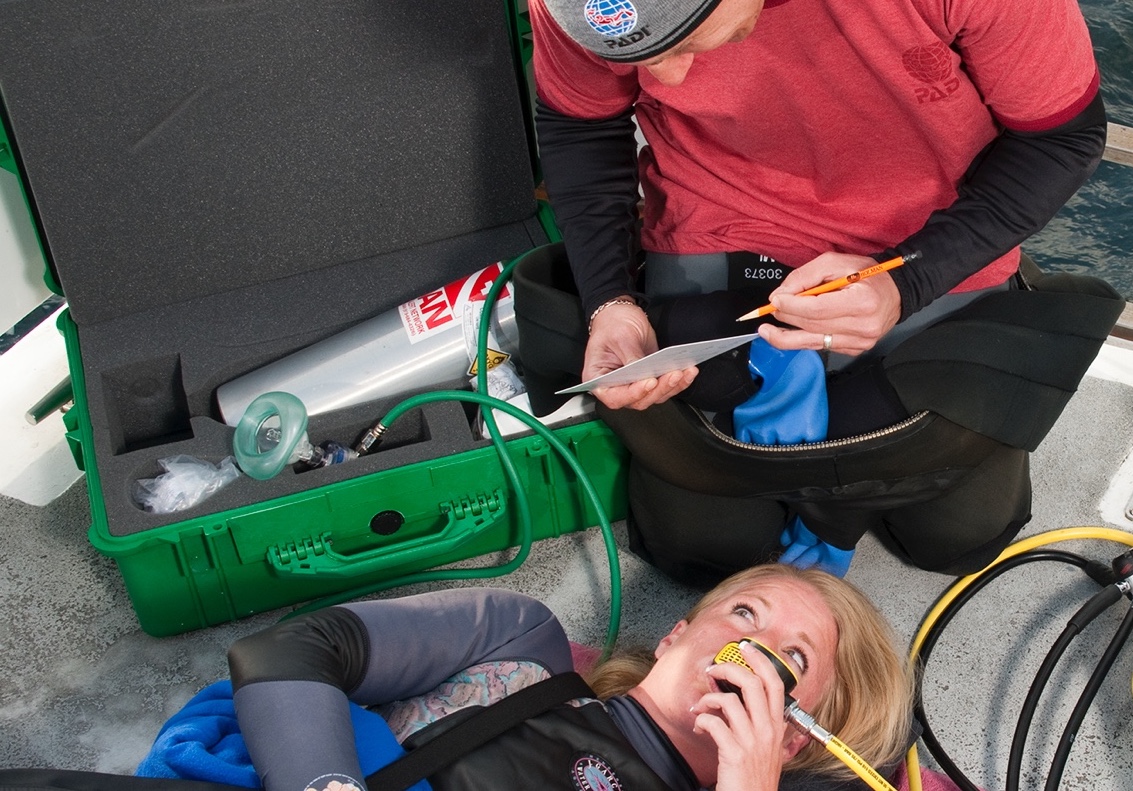Emergency oxygen is the primary first aid for decompression sickness (DCS/the bends) and arterial gas embolisms (AGE). It is often used to help people who have drowned or experienced cardiac arrest. If you’re not a dive professional, you may have debated the benefits of taking The PADI Emergency Oxygen Provider Specialty course. Here are a few things to consider.
A basic emergency oxygen (O2) kit can provide 39 to 58 minutes of oxygen — preventing permanent paralysis or even loss of life. If you frequently dive in locations that are more than 30 minutes away from a medical facility, you should have an emergency oxygen kit and know how to use it.
Many ambulances carry oxygen, but not all. It can take several minutes or more for emergency personnel to arrive and in a diving emergency, every minute matters.
Even if you always dive with a professional operator, there may not always be someone available to provide aid. As a beginner diver, I had a lot of problems equalizing my ears. I’d sit alone on the boat while everyone else enjoyed a lovely dive. After a while, I’d be joined by other beginner divers who hadn’t figured out how to improve their air consumption. If one of us had suddenly felt joint pain, tingles, or other signs of the bends, we couldn’t have done anything more than open the oxygen kit and say, “Uhhh….now what?”

If you dive with a club, you could find yourself in a similar situation — you have an O2 kit, but you don’t know what to do with it. Let’s say you and your buddy end the dive early, you’re shimmying out of your wetsuit and then your buddy is suddenly bent over in pain. The dive leader likely brought an O2 kit, but if you don’t know how to use it, the best you can do is call for help and wait.
Assembling an emergency oxygen unit is similar to assembling a scuba unit, but it’s not exactly the same. You need to know how to adjust the flow rate and ensure a good mask fit. In less than one day, you can learn how to effectively administer oxygen to an injured diver, by taking the PADI Emergency Oxygen Provider Specialty course.
The PADI Emergency Oxygen Provider Specialty course teaches useful skills vital to every diver. Here’s what you need to know about the course.
How to recognize injuries and illnesses that require emergency oxygen What’s inside an O2 kit and how to use it Best practices for administering emergency oxygen
There are no in-water sessions or prerequisites for this specialty. The course is open to both divers and non-divers, so if you have a friend who is a freediver or who simply likes to hang out on the beach while others go diving, they can take the course, too.
If you’re working toward the coveted Master Scuba Diver (MSD) rating, the Emergency Oxygen Provider Specialty course is a quick, easy and practical specialty to pick up (you need five PADI Specialty certifications total). It’s quick and easy because the Rescue Diver course already includes a section on emergency oxygen administration. You still need to complete the online training for Emergency Oxygen Provider, but the in-person training can count for both courses. Ask your PADI Instructor for more information.
As mentioned above, emergency oxygen is the primary first aid for a variety of critical injuries. This is a valuable course for anyone who spends a lot of time in the water (divers, freedivers, mermaids) and those who oversee in-water activities, such as lifeguards and boat crew.
If you plan to look for work as a divemaster or instructor, this course is a must. Most dive operators will expect you to have this training.
Even if you never expect to use your emergency oxygen training, it’s better to be prepared than find yourself in a worst-case scenario feeling helpless. For those who have a bit of scuba diving anxiety, knowing what to do in an emergency can help you feel less stressed and more confident.
Learn More About the Emergency O2 Course
Share This